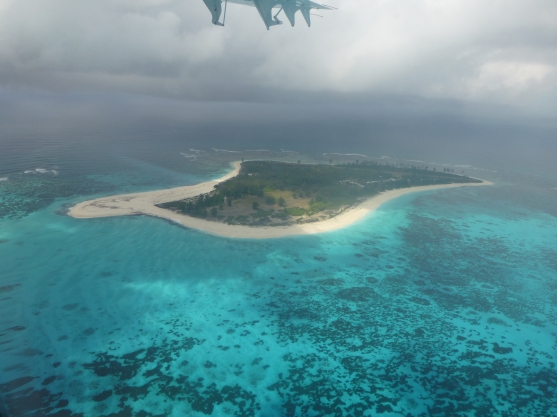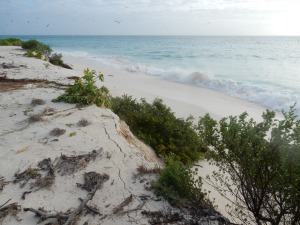
On 20 June Christine and I left Bird Island and returned to Mahe. The growing chicks in the Sooty Tern colony were becoming much more mobile and thus prone to move away from their nest sites at any disturbance, putting them at risk of attack from neighbouring adults when they try to return. By the time we left we had retrieved all but one of our GPS tags that had been deployed on Sooty Terns for between three and twelve days. This enabled us to obtain over 20 tracks of foraging birds during incubation and early chick-rearing. In addition our experiences confirmed that the attachment method that we had developed for fitting Pathtrack GPS tags to Sooty Terns works well. We also came away with information on the variability of incubation shift durations during the course of the 2016 breeding season.
Our departure is always a sad moment but we left knowing the we have new data that will provide original information on the Sooty Terns’ travels in search of food during the early breeding season.
Investigation of the whereabouts of feeding areas later during the breeding season, as the chicks grow older and eventually begin leaving the colony, will require much greater use of rapidly-developing tracking technology. As the chicks grow their parents spend less time in the nesting area and as a result the adults are much more difficult to catch when they do return. Discovery of their feeding areas at this time will require a system for remotely detecting when a tagged bird is in the colony, and downloading the data from the tag automatically whenever the bird is present. This system is now available but is much more expensive than the tagging and recapture that we currently use and our funds will not allow us to take the research this further step.

The vast majority of the chicks looked fit and healthy when we left and we hope that their parents will continue to be able to find good food supplies. This is not always possible; unpredictable food shortages can occur at any time during the breeding season, as we discovered in both 2014 and 2015, during which chick survival was poor. In those years the sea surface temperature was unusually warm in the tropical western Indian Ocean and this seems to have impacted the birds’ food supplies in some way. Now, the sea surface temperature is cooler and the birds seem to be doing well but other threats are emerging, including the extensive erosion of the north-western beach on Bird Island. In our last few days high tide swells washed away some of the eggs and chicks. This is an immediate concern, but habitat change, climate change and over-fishing of pelagic fishes in the region constitute longer term concerns for Sooty Terns and other tropical seabirds.

For this year, we have marked out squares in the colony where we have counted the eggs and in early September our young assistant Dylan will return to count the chicks in those squares. He will do this in the late evening when chicks return to their nest sites from wherever that have assembled in crèches during the heat of the day. His counts will give us a measure of the survival of chicks from hatching to readiness to leave the colony.
Monitoring programmes such as this are vital if we are to detect significant changes in the Sooty Terns’ biology and numbers over the coming years. Repeats of GPS tracking are needed to see if feeding areas change over time and if such changes can be linked to known changes in physical and biological ocean conditions. It will also be valuable to track birds from more colonies in Seychelles to discover whether each has its own feeding areas or whether (and perhaps more likely) some foraging areas are shared. In this case changes in food availability in preferred areas would have widespread consequences for Seychelles’ Sooty Terns.
We are making good progress – but there is still much to learn!
It’s always hard to leave Bird, as I too well know. Your work there is providing vital info and is much appreciated by all who know sea birds are to a great extent canaries in coal mines.
And, by the way, it was great to see you and Christine the other day, and I look forward to the next time.
LikeLike
Thanks Sandra, good to see you too. Safe travels and good luck for the future. C&C
LikeLike